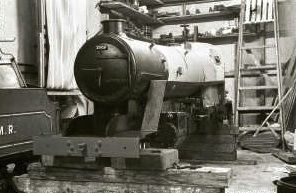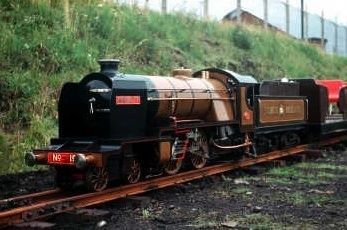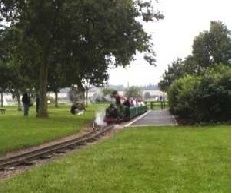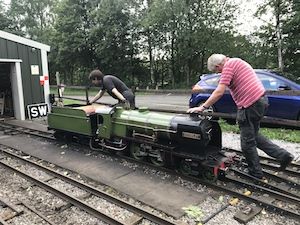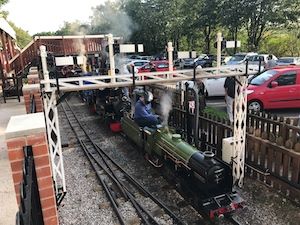Rudyard Lake Railway
Waverley
Privately Owned
Waverley is a 4-4-2 tender engine No. 196 built by David Curwen of Devizes in 1948 and called Black Prince. It has a long history and has run at Weymouth, Loughborough, Dinting and the Isle of Mull.
After a brief trip to Skegness It started its main work along with a pacific locomotive (Robin Hood) at the Weymouth miniature railway and ran there for many years. It ran for a while at Loughborough on the fledgling Great Central Railway. It also visited Dinting railway centre before being bought to help start the railway on the Isle of Mull.
She is a 4-4-2 “Atlantic” locomotive and originally had an American appearance with a high footplate around the boiler. In this form she ran firstly for a year on the Skegness Miniature Railway un-named as “2005”, but went to Baydon Miniature Railways in 1953. By August 1953 she was at Weymouth running as Black Prince where she remained until about 1965. At Weymouth during the holiday season she would make trips around a mile-long circuit at the rate of about six an hour clocking up a staggering 80,000 miles, or so, in her first thirteen years.It is hardly surprising that on the sale of the Weymouth line to new owners the locomotive was found to be in need of heavy repairs. These were deemed too costly so it was sold to the enthusiast, Jack Doyle, of Cheshire who decided to make such repairs that were necessary to get her moving. Once these were carried out she entered a new phase of life being exhibited at traction engine rallies. On these occasions she pulled a small train carrying about 30 people over a portable track.
This proved hard work for Mr. Doyle who sold her on to Tony Allcock, of Long Eaton. He decided to give her a thorough overhaul and rebuild. The rebuild included a new smokebox with smoke deflector plates, new cab and lowered footplates together with the new name Waverley. All of these changes gave the locomotive the appearance that she still has today and once completed she ran at the Great Central Railway, Loughborough, carrying visitors from the main line station to the sheds before the GCR standard gauge became operational.
Eventually the layout of the standard gauge lines there was changed and the 10¼ inch track was lifted. The locomotive was sold to Graham Ellis for the newly conceived railway on the Isle of Mull, but had to be stored for some years until the line was built and opened in 1983. During this time she was re-boilered by David Vere and painted in Caledonian blue livery. She ran in Mull, but only as a second engine since her external driving position did not lend itself too well to the climate of the Island. She also had adhesion problems due to a combination of the weight of the train and wet rails. These were overcome by the judicious use of the old lead plumbing system of Torosay Castle, the local stately home. The pipes were cast into the ingots that were bolted between the frames where they remain to this day. Even this did not solve the adhesion problems and Waverley was little used. Mull Rail put her up for sale to release funds for a new more powerful locomotive to operate alongside its 2-6-2 Victoria.
Eventually, in 1997 Waverley was sold to a group of enthusiasts and initially kept in Mull where she was used there from time to time until she was moved in 2003 to Rudyard Lake. In 2004 she returned to Scotland for her boiler overhaul at the SRPS, Bo’ness, going back to Rudyard towards the end of the 2005 running season where she remains. Whilst at Rudyard it has been repainted from Caledonian Blue livery into Apple Green.
A major overhaul was undertaken between 2018 and 2020 and she returned to Rudyard in August 2020 in time for the annual Steam Gala.

